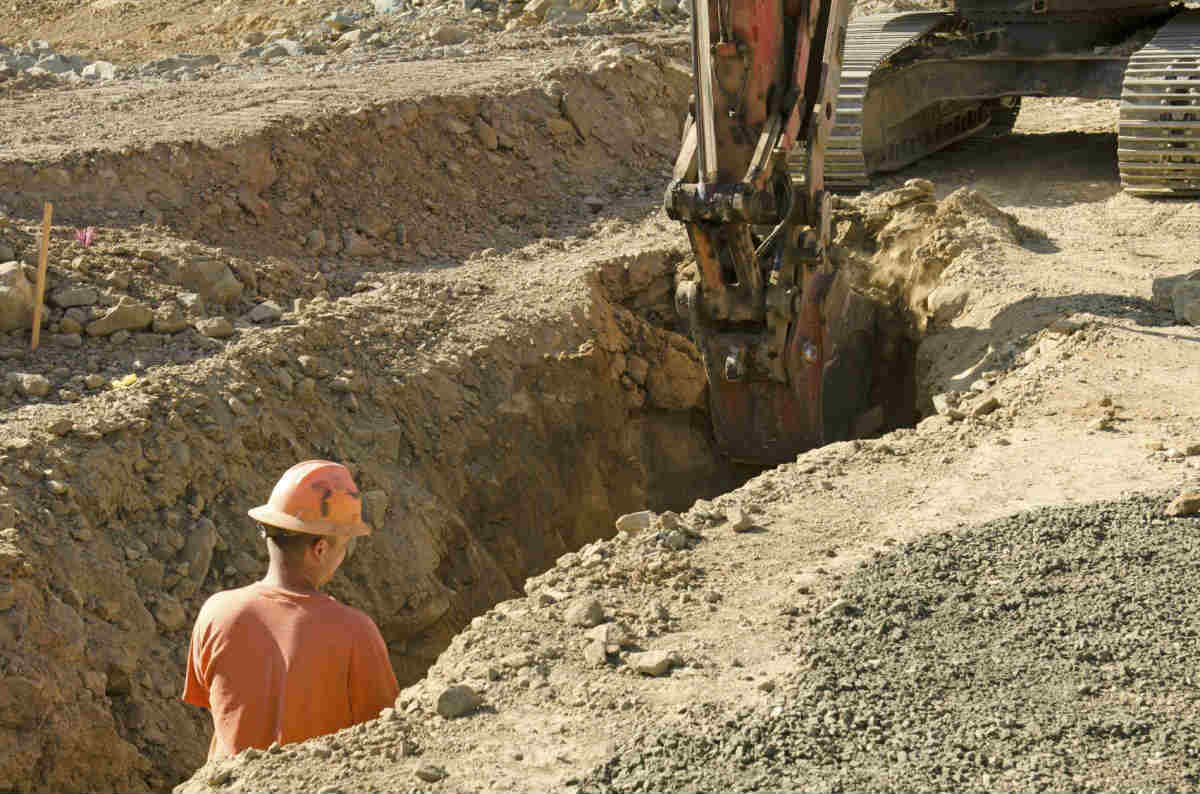Organizations like OSHA have made the construction industry a much safer environment for it’s workers. Still, workplace injury accidents occur.

The first step in building a structure is digging a trench to lay the foundation. This is done by excavation teams who are in charge of digging the right size trench. These excavation teams are usually trained and taught how to evaluate and dig trenches. They are also trained on precautionary and protective measures to reduce the risk of injury caused due to trench failures and collapses.
The Occupational Safety and Health Administration (OSHA), is a federal regulating body that has laid down certain rules, regulations and guidelines that construction workers should follow. In this article, we will discuss some of these safety measures that can reduce the risks of injury at construction sites.
Proper Training and Education
Trench excavators should have proper training and knowledge about soils, the types, weight and moisture content of different soil, water content and water tables, weather changes and their effects on soil, effects of vibrations caused by vehicles and effect of adjoining structures.
Inspection and Testing of Soil
Soil testing is an important stage in trench building that can determine the safety and stability of the soil that will be worked on. Soil is classified as rock, type ‘A’ that is clay or sandy clay, Type ‘B’ – gravel, Type ‘C’ – silt and sandy loam and farmers dirt. Soil tests like the Plasticity test, the Pocket Penetrometer test or the Shear Vane test can be conducted to measure the safety and stability of the soil that will be worked on.
Preventing Trench Cave-Ins and Collapses
Trench cave-ins and collapses can be prevented. OSHA has laid down certain guidelines for excavators to follow to avoid excavation related injuries. Workers should be well trained in the sloping and benching methods that can stabilize the otherwise weak walls of a trench. On sites where shoring and benching are not possible, they can use shielding methods where metal or timber shields or sheet piling can be done.
These methods can be used depending upon the height of the trench. According to OSHA, trenches that are more than four feet high require exits created within 25 feet of the workers working space. They also make it necessary for every trench site to have a copy of the maintenance inspection records, manufacturer’s details, technical information about the site and manuals for any machinery that is used at the work site.
Every construction company tries its best to ensure that proper safety standards and OSHA guidelines are followed at their work sites. Sometimes, in spite of taking precautionary measures and providing training to employers, trench collapses can lead to accidents causing injury to workers. Such accidents can cause severe injuries or even prove to be fatal.
These are the times when the construction company, along with OSHA, should attempt to evaluate the reason for trench failure. Inspection records, training given to workers, soil evaluations and other precautionary measures taken, like shoring or shielding methods implemented, should be re-evaluated to determine the causes of trench failure. Such quick actions can ensure better safety of the workers at construction sites.
Contact a St. Louis Work Comp Lawyer
If you have been injured in a trench collapse accident at your workplace, make sure you receive all of your workers compensation benefits. At the Law Office of James M. Hoffmann, we can provide you with the necessary information to make the right choices so that you can receive the best medical care, benefits and income. Call us today at (314) 361-4300 or fill out our online contact form.
Workplace Injury and Accident Causes
Asbestos Exposure
Asbestos Removal
Second Hand Asbestos Exposure
Sexual Assault Workplace
Physical Assault at Workplace
Workplace Injuries Assembly Line
At Fault Accident
Workplace Attack
Benzene Exposure
Injured on Lunch Break
Building Collapse
Workplace Bullying
Chemical Exposure in the Workplace
Chemical Hazards in the Workplace
Cold Stress in the Workplace
Combustible Dust Explosion
Computer Use
Construction Site Accident
Conveyor Belt Accident
On the Job Injury Cause by Coworker
Crane Accident
Injuries from Desk Jobs
Diesel Exhaust Fumes Exposure
Digging Injury
Breaking Company Policy
Drowning at Work
Workplace Drug Use
Electrical Workplace Accidents
Elevator Accident
Equipment Accident
Ergonomics in the Workplace
Excessive Overtime
Workplace Explosion
Extreme Danger
Fall at Work
Fire in the Workplace
Slicer Accident
Forklift Accident
Walk in Freezer
Gas Pipeline Accident
Hard Work
Workplace Hazardous Substances
Hazardous Equipment in the Workplace
Heavy Machinery Accident
Horseplay in the Workplace
Danger at Workplace
Insomnia in the Workplace
Jumping Accident
Ladder Falls at Work
Loading Dock Accident
Machinery Accident Workplace
Equipment Failure Accident
Mining Accident
Mold in the Workplace
Nail Gun Accident
Workplace Noise
Non Collision Accident
Heavy Objects
Workplace Office Equipment
Opioid Use
Injury at Work Due to OSHA Violation
Overexertion Injuries at Work
Use of Pain Killers
Power Tool Injury
Inadequate PPE
Repetitive Motion Injuries in the Workplace
Mansfield Bar
Scaffolding Accident
Secondhand Smoke in the Workplace
Side Effects
Silica Exposure
Sleep Disorder
Slip and Fall Injuries in the Workplace
Stairs at Work
Struck by a Vehicle
Tar Fumes
Toxic Chemical Exposure
Toxic Fumes in the Workplace
Car Accident While Working
Trench Collapse
Trips at Work
Unsafe Working Conditions
Workplace Violence
Welding Injury
Winter Hazards in the Workplace
Working Shifts
